Suppose I have a circle with radius 1 and I want to find the area of the pink region bounded by the purple line and the x-axis:
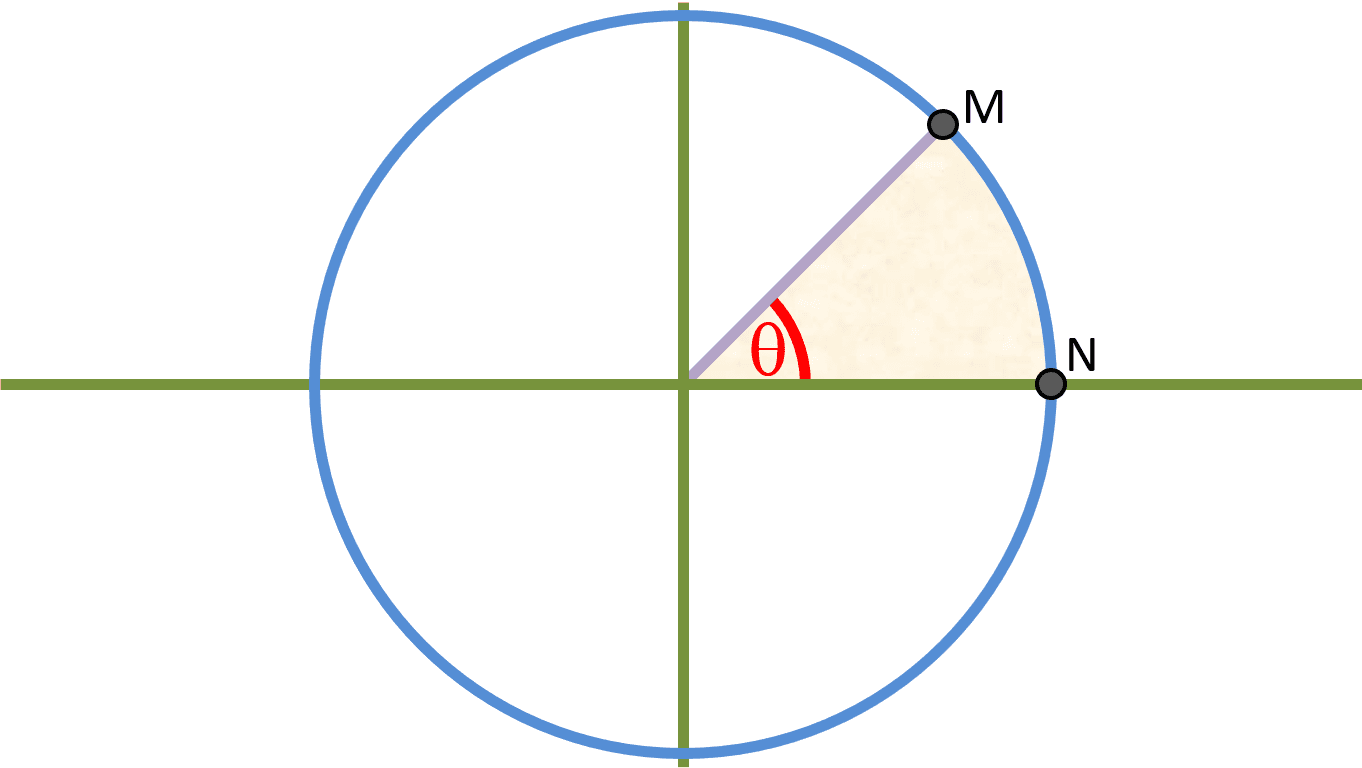
Let point M be the point where the purple line touches the circle and let point N be the point where the x-axis touches the circle. The formula for finding the area of a sector of a circle with raduis 1 is:
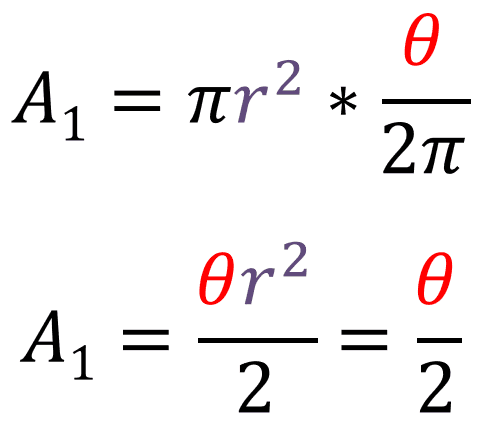
Now lets make a triangle by connecting points M and N:
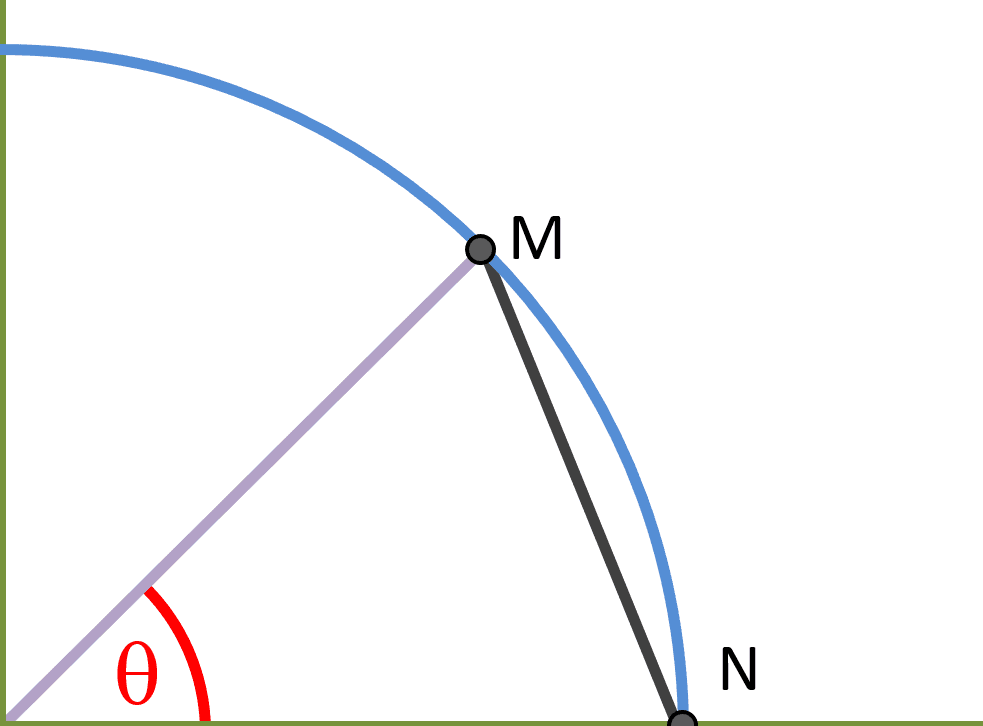
Since the height of this triangle is [sin(θ)] and the base is 1, then the area of the triangle is:
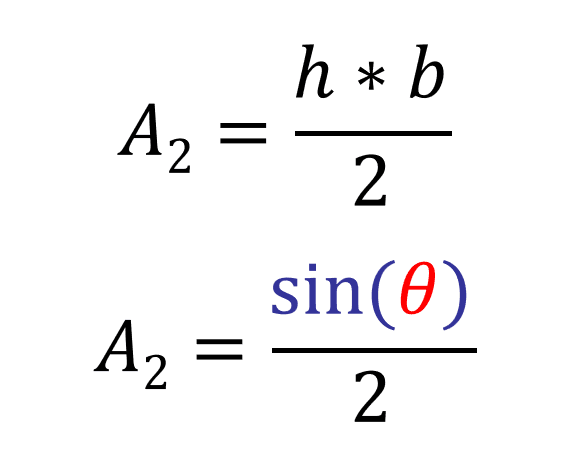
We know that A2 ≤ A1. Now lets create a smaller circle inside the main circle which has the radius of [cos(θ)]:
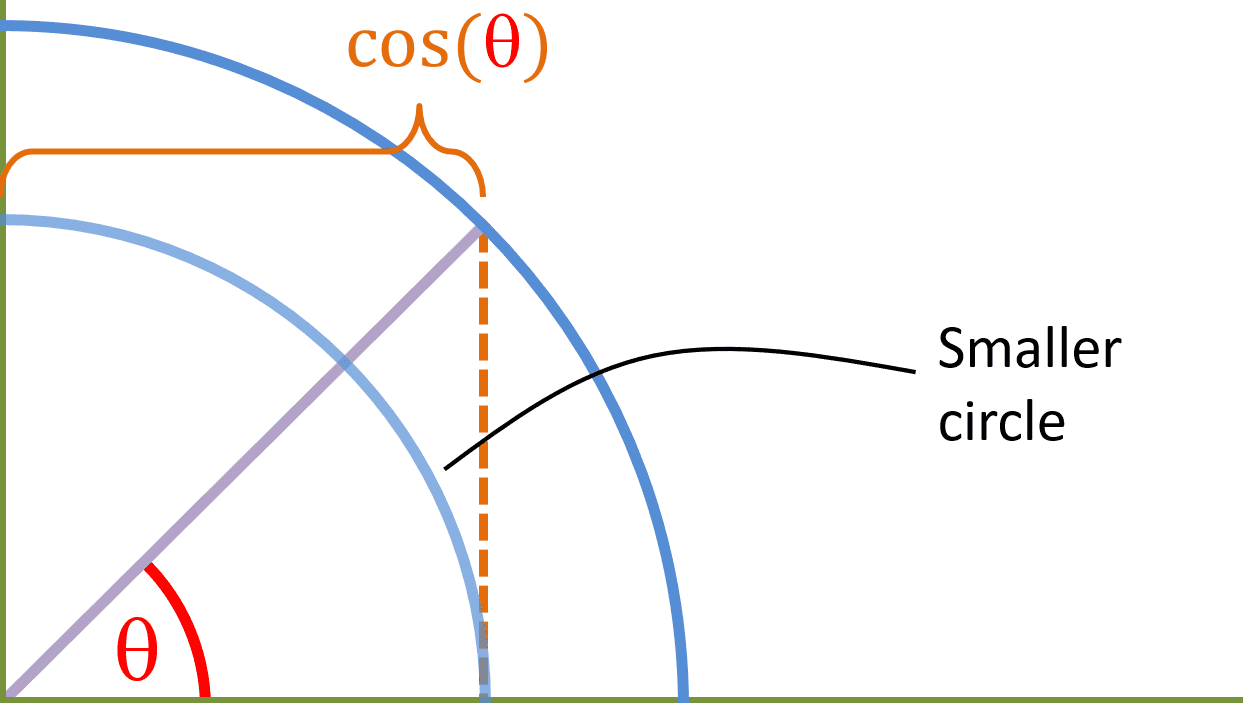
The area bounded by the purple line in the smaller circle and the x-axis has the following equation:
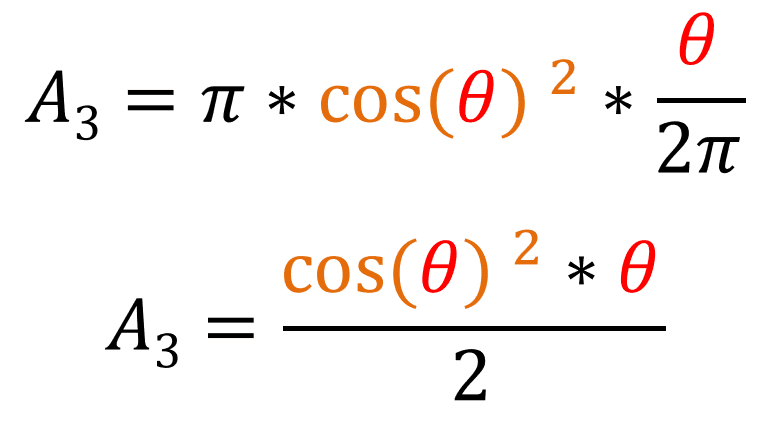
We know that A3 ≤ A2 ≤ A1, which can be written as:
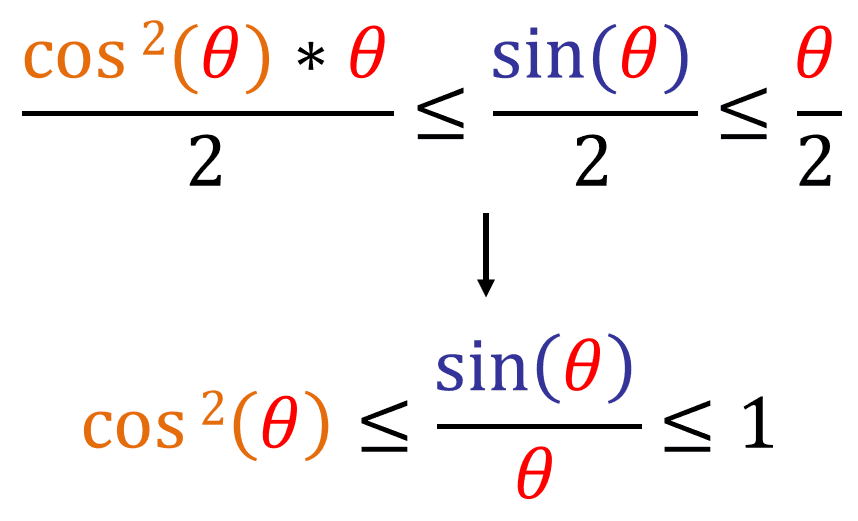
Now lets take the limit of all sides as x approaches 0:
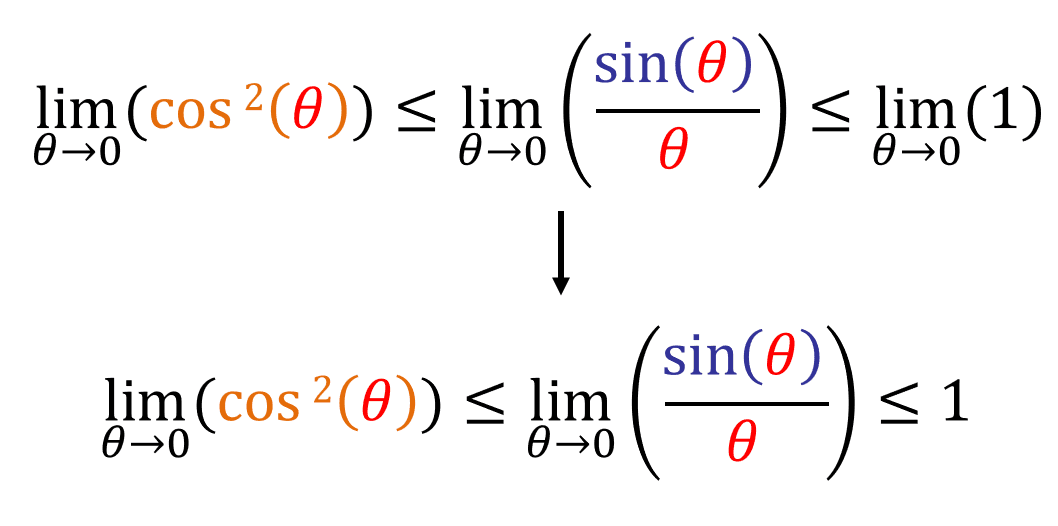
Since [limθ->0 (cos(θ)) = 1], then, by the squeeze theorem, limθ->0 (sin(θ)/θ) has to be 1. Keep in mind that this only works if θ is in radians.
To change an angle from radians to degrees, you multiply it by \(\frac{180}{\pi}\). Let \( \frac{180}{\pi} \theta = \alpha \), and let's say sin now uses degrees:
That means if you use degrees, then: